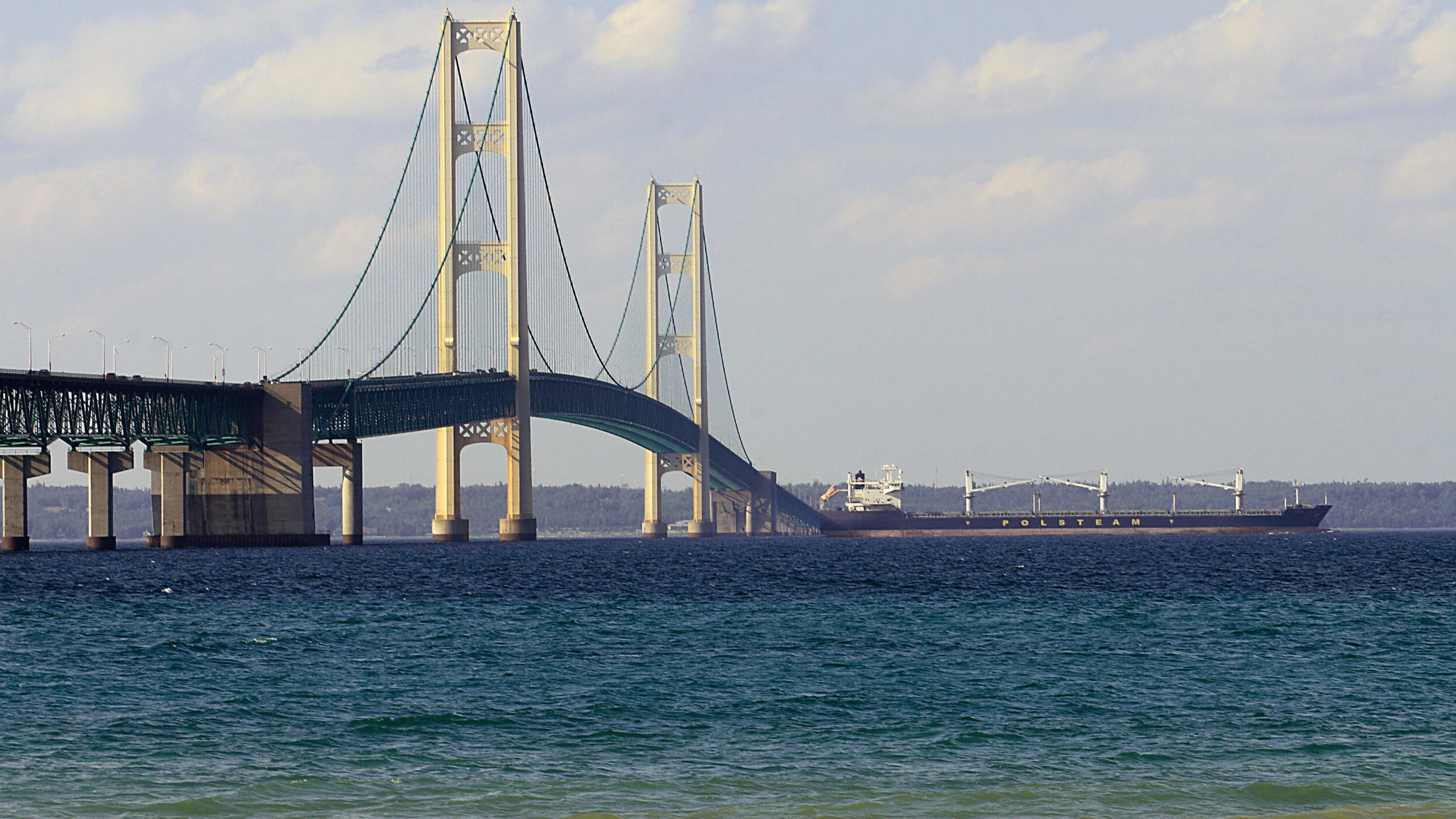
A critical piece of energy infrastructure linking the US and Canada is at risk of being shut down.
Enbridge’s Line 5 pipeline starts in Superior, Wisconsin and ends in Sarnia, Ontario. It carries a supply of products that fuel the region’s industries and communities: light oil, synthetic light oil and natural gas liquids (NGLs), which are refined into propane.
In Michigan, Line 5 crosses the Straits of Mackinac, waterways that connect Lake Michigan and Lake Huron. For approximately seven kilometres, two 20-inch-diameter parallel pipelines are set underwater on top of the lakebed using 10-foot steel support anchors.
Michigan Governor Gretchen Whitmer is attempting to cease Line 5’s operations based on perceived safety concerns, but the pipeline has been operating since 1953 without a single leak and the company has significantly increased safety precautions over time.
Enbridge also intends to invest $500 million to replace the existing line with a new pipeline enclosed in a concrete underground tunnel to further protect the Straits by 2024.
Here’s why Line 5 needs to continue operating until it can be replaced by the Great Lakes Tunnel.
Fact: Line 5 is safe
Line 5 has been operating in the Straits of Mackinac for 68 years without a single release.
The walls of the dual pipelines are three times as thick as those of a typical pipeline, with an “incredibly durable” enamel coating to protect from corrosion and potential impacts, Enbridge says. Inspections conducted in 2019 and 2020 confirm that the coating system is working as intended and effectively protecting the pipelines, the company reports.
The Straits of Mackinac crossing is a no-anchor zone, regulated by the US Coast Guard. Enbridge has added extra safeguards to reduce the risk of a vessel’s anchor striking and damaging the pipelines, following an incident in 2018 where a boat anchor was dragged along the lake bottom, denting one of the pipelines.
Run from the 24-7 Enbridge Straits Maritime Operations Centre (ESMOC), this includes a communication and monitoring system that identifies approaching shipping vessels and reminds them of the no-anchor zone and high-resolution cameras that act as an early warning and notification system. When weather permits, Enbridge has also positioned a patrol boat over Line 5 to observe all vessel activity in proximity to the pipelines.
ESMOC staff has full authority to direct the Enbridge operations centre to shut down Line 5 if sufficient risk is identified.
A September 2020 safety analysis by C-FER Technologies in Alberta found that these measures reduce the risk of pipeline failure by 99.5 per cent, compared to no measures at all.
Fact: Enbridge wants to make Line 5 even safer, creating jobs in the process
Enbridge has applied to state and federal regulators for a $500-million project to make Line 5 even safer, enabling continued reliable, safe energy delivery while boosting employment in the region.
The company’s planned Great Lakes Tunnel project will replace the existing dual pipelines with a new pipeline secured inside a concrete tunnel located approximately 100 feet below the lakebed.
In addition to housing Line 5, in the future the tunnel could also house other important infrastructure for the region like transmission systems for electricity, data and telecommunications.
The project will protect the Great Lakes and thousands of Michigan’s highest paying jobs, according to John Walsh, CEO of the Michigan Manufacturers Association, which is part of a coalition working to ensure the project moves forward.
In addition to protecting the Great Lakes, the coalition says the project will help kickstart the Michigan economy as it emerges from COVID-19.
Enbridge estimates constructing the tunnel system will require two million work hours to complete, and the company is committed to using local workers. Following regulatory approval, construction is planned to commence in 2021, placing the new Line 5 crossing into service in 2024.
Fact: Shutting down Line 5 would harm Michigan, Ohio, Pennsylvania, Ontario and Quebec
While the proposed Great Lakes Tunnel would come at no cost to taxpayers, shutting down Line 5 would have significant impacts on communities in the region, including Ohio, Pennsylvania, Ontario and Quebec.
A Line 5 shutdown would compromise crude supply to ten refineries in the region to varying degrees, directly affecting fuel prices and risking refinery closures, impacting economic activity and potentially thousands of jobs, according to Ohio refiner PBF Energy.
Without Line 5, Enbridge estimates that the region would lose about 45 per cent of its supply of gas, diesel and jet fuel. Michigan, the largest residential consumer of propane in the United States, would lose about 55 per cent of its propane supply.
A study conducted on behalf of the State of Michigan found that alternatives to Line 5 would likely increase the price of propane on both a wholesale and retail level.
The Mackinac Centre for Public Policy estimates that if Line 5 were shut down, Michigan residents could have to spend $25,000 to convert from propane to electric heating, followed by a $3,500 annual increase to their annual heating costs. That could affect 330,000 Michigan residents, according to Mackinac.
Line 5 also supplies petrochemical facilities in the region including the Sarnia-Lambton Petrochemical and Refining Complex, which employs more than 4,900 people directly and is estimated to indirectly generate an additional 23,500 jobs.
One facility owner, Plains Midstream Canada, warns that without product from Line 5, its facilities in Sarnia, Rapid River, MI and Superior, WI would face shutdowns and price hikes, resulting in job losses in “another significant blow to area residents at a time when they can afford it the least.”
Transporting the same amount of crude oil and NGLs as Line 5 would require 2,000 trucks or 800 rail cars going one-way each day. According to research conducted by the Fraser Institute, there are likely to be more spills when transporting oil by rail than by pipeline, and still more spills if that volume is moved that same distance by truck.